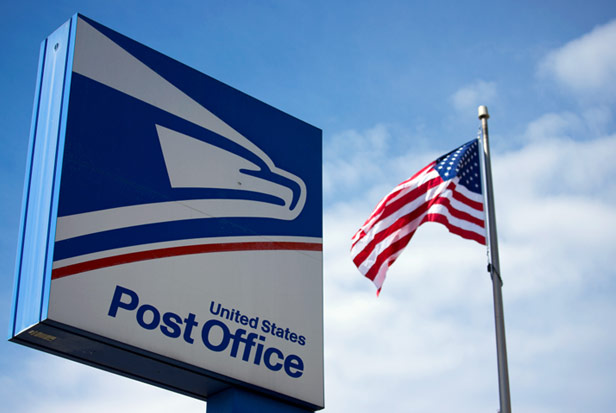News March 23, 2021
USPS Plan Has Positives, Negatives For Promo
Price increases and slower delivery on some mail are likely, but enhanced package service for businesses is in the cards, too.
The United States Postal Service has announced a 10-year strategic plan that sets the stage for steeper price increases and that slows the delivery of some letters and packages, but also proposes new business-related services that companies in the promotional products industry can potentially leverage.

Postmaster General Louis DeJoy unveiled the plan, dubbed “Delivering for America,” on Tuesday, March 23. The postal service, which relies on the sale of postage, products and services – not tax dollars – to fund its operations, has lost money in each of the last 14 years, including a $9.2 billion net loss in its latest fiscal year. The 10-year plan aims to return the USPS to financial strength and growth.
“The plan will achieve excellence, adapt the postal service to the evolving needs of the American people and address our obligation for financial sustainability,” said Ron Bloom, chairman of the USPS Board of Governors.
Rising Prices, Longer Delivery Times
It’s likely that the cost of stamps and shipping packages will go up under the new plan. For instance, DeJoy aims to hike rates on first-class mail faster than the USPS was previously allowed. In the past, rate rises were aligned with inflation. In 2020, however, the Postal Regulatory Commission decided to allow USPS greater latitude to raise prices.
Some increases already went into effect on January 24. Those include a 6.5% average rate increase for First Class Package Service.
The Postal Service has always been a part of this nation’s foundation and will continue to be. Find out more information about our plan at https://t.co/Y4ijKQB5Fw. #PostalProud
— U.S. Postal Service (@USPS) March 23, 2021
When might additional price lifts go into effect, and just how steep will they be? There’s not a timeline or cost structure proposed yet. The USPS Board of Governors would need to approve any price change, which would also be reviewed by the Postal Regulatory Commission. USPS didn’t rule out further increases in 2021.
“Our plan will utilize judicious and prudent strategies to optimize prices for our market-dominant products within applicable regulatory constraints, and by more effectively aligning prices to the marketplace for our competitive products,” USPS said in a statement.
Meanwhile, the postal service wants more time to deliver first-class letters, flats and packages. Currently, USPS’ goal is to deliver 96% of first-class mail within three days; now it wants up to five days to do so. DeJoy emphasized that first-class mail traveling within a local area will continue to be delivered in one or two days and said that 70% of first-class letters, flats and packages will continue to reach their destinations in three days or less.
“These modifications shift volume from unreliable air transportation to more reliable ground transportation, and enable network improvements that will allow us to meet or exceed 95% on-time delivery across mail and shipping product classes,” USPS said in a statement.
Ground transportation is also less expensive, which helps the postal service reduce expenses. Some critics say the slower delivery times will hurt small sellers already struggling to compete with Amazon’s speed.
Potential Upsides for Businesses
Aiming to adapt to a marketplace increasingly dominated by e-commerce and in which remote work is playing a larger role, USPS’ plan intends to generate $24 billion in net revenue, in part, from enhanced package delivery services to business customers.
The effort includes a new suite of services called USPS Connect. As part of that, the postal service will expand its core package products – namely, Priority Mail, Priority Mail Express, First-Class Package Service and Parcel Select – to offer same-day, next-day and two- to three-day delivery options six to seven days per week. That could potentially be a boon to promo businesses, especially as demand for drop-shipping/kitting solutions has been high during COVID-19, a phenomenon that could possibly persist, if not at current heights, at least to a degree once the pandemic ends as more people work remotely all or part of the time.
- Service standards that foster service excellence - 95% on time reliability
— U.S. Postal Service (@USPS) March 23, 2021
- With congressional support, an electric delivery fleet by no later than 2035. pic.twitter.com/OksM26LQE8
With USPS Connect Local, the postal service would provide neighborhood businesses access to local drop points and local services for same-day or next-day delivery. With USPS Connect Regional, the postal service would deliver high-volume shippers access to its network of distribution centers for one- to two-day delivery. With USPS Connect National, the mailer would provide national shippers access to its network of distribution centers to offer a diverse suite of same-day, next-day, and two- to five-day delivery services.
“Other offerings will include an enhanced Informed Delivery platform, enabling business and residential users to do more, such as provide carriers instructions on where to leave or pick-up packages, notify USPS to hold mail or schedule redelivery of packages before important items reach their mailboxes,” USPS said in a statement.
Other things to be aware of in the plan: The postal service said it will continue to deliver mail six days a week in the U.S., while offering package delivery services seven days a week. USPS is also updating its vehicle fleet with thousands of new delivery vehicles that boast enhanced safety features and, notably for promo businesses, more room for accommodating packages. The postal service noted that, were it to receive adequate financial support from Congress, it could switch to an electric vehicle fleet by 2035 to reduce its carbon footprint.
USPS is also asking Congress to pass legislation to require that retiree health benefits be integrated with Medicare, and that expenses associated with those benefits be based on vested benefits. This would reduce the postal service’s cash flow expenses by approximately $44 billion over 10 years.
